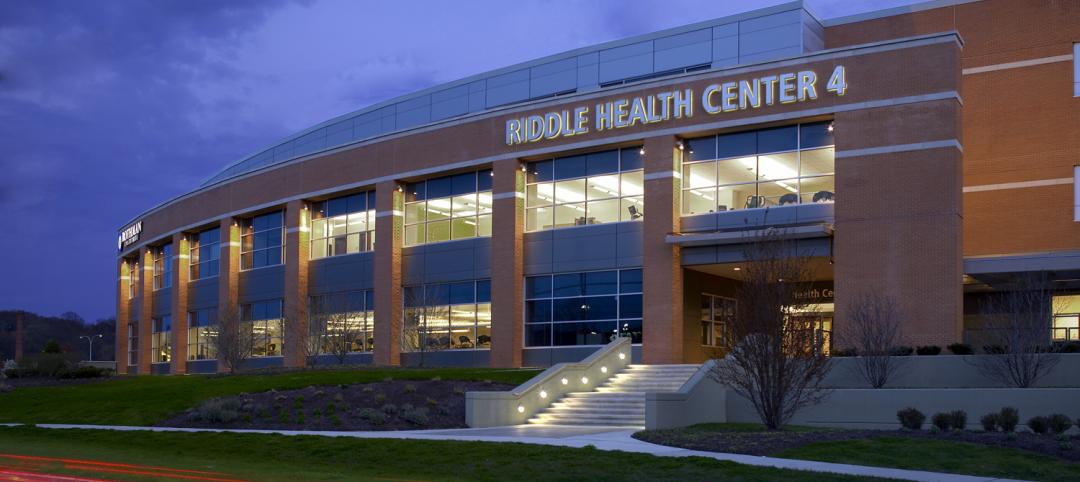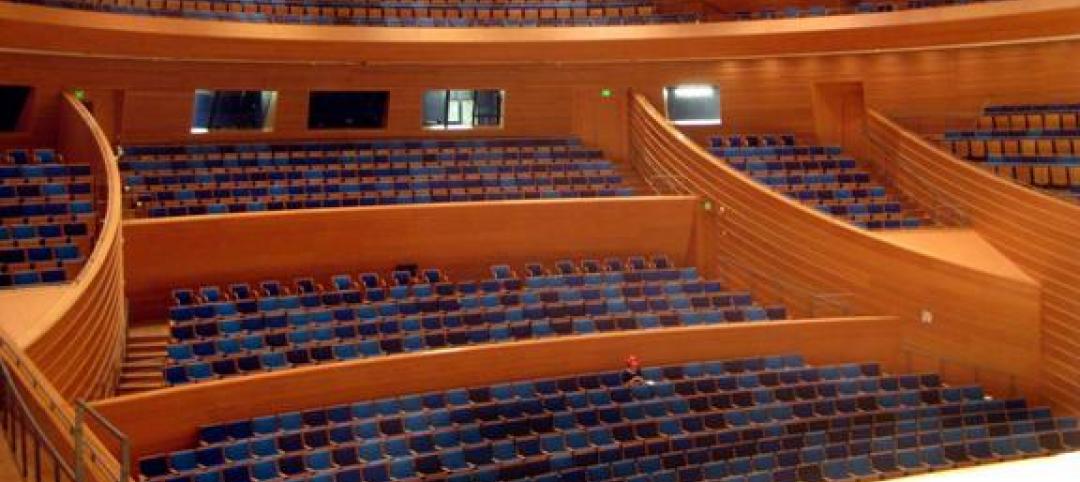1. To optimize a space for speech intelligibility, designers should specify products such as fiberglass ceiling tiles that have a noise reduction coefficient (NRC) of:
A. Less than 0.5
B. Greater than 0.5
C. Exactly 1.0.
D. Greater than 1.0
2. Which of the following statements is NOT true, according to research from John Hopkins University and the University of Kansas?
A. Sound pressure levels in hospitals decrease each year by 0.40 db(A).
B. Sound pressure levels in hospitals are increasing each year by 0.40 db(A).
C. Average speech intelligibility ratings for U.S. classrooms in 2000 were 75% or less.
D. Average sound levels at Johns Hopkins Hospital have exceeded the range at which normal conversation takes place.
3. Which of the following is a design element of a suspended ceiling strategy for sound absorption, sound isolation, or both?
A. Using vibration isolation hangers.
B. An acoustically absorptive ceiling layer with a large air gap behind it.
C. Acoustical ceiling tile on a grid.
D. All of the above.
4. Ceiling tile with a mid-level Ceiling Attenuation Class—or a heavy, rigid ceiling finished with a drywall suspended ceiling with an exposed acoustical plaster system— would be a viable solution for:
A. An energy-efficient acoustical ceiling design.
B. A space that both absorbs and isolates sound.
C. An acoustically high-performing workplace or office.
D. None of the above.
5. Which of the following is NOT a key variable when formulating wall design for ideal sound isolation?
A. Wall mass
B. Air space
C. Plenum temperature
D. Air tightness
6. True or false: If the window area exceeds 10% of the total wall area, then the window and frame will generally dictate the Sound Transmission Coefficient (or sound transmission loss performance) for the entire wall.
A. True
B. False
7. One drawback of concrete floors is the transmission of high-frequency impact noise such as high heels tapping on the floor. Which of the following is a workable solution to this problem?
A. Carpeting
B. Cork tiles
C. Felt underlayments
D. Specifying another kind of flooring
8. MEP systems, especially HVAC systems, can contribute significantly to undesirable ambient noise levels. Which of the following is NOT a step that can be taken to mitigate these noise issues?
A. Specifying quiet equipment
B. Siting the equipment near occupied spaces
C. Correctly sizing the equipment
D. Limiting air velocity
9. True or false: It is not possible to specify daylighting products with lighter surfaces that absorb sound.
A. True
B. False
10. Which of the following standards or guidelines does NOT recognize acoustic elements as essential to sustainability or occupant health?
A. LEED for Healthcare
B. ANSI Classroom Acoustic Standard (ANSI S12.60)
C. LEED for Homes
D. FGI/ASHE Guidelines
Related Stories
| May 7, 2012
2012 BUILDING TEAM AWARDS: Fort Belvoir Community Hospital
A new military hospital invokes evidence-based design to create a LEED-certified facility for the nation’s soldiers and their families.
| Apr 24, 2012
AECOM design and engineering team realizes NASA vision for Sustainability Base
LEED Platinum facility opens at NASA Ames Research Center at California’s Moffett Field.
| Apr 13, 2012
Goettsch Partners designs new music building for Northwestern
The showcase facility is the recital hall, an intimate, two-level space with undulating walls of wood that provide optimal acoustics and lead to the stage, as well as a 50-foot-high wall of cable-supported, double-skin glass
| Apr 4, 2012
Educational facilities see long-term benefits of fiber cement cladding
Illumination panels made for a trouble-free, quick installation at a cost-effective price.
| Jan 26, 2012
Hendrick Construction completes Osso Restaurant in Charlotte
Designed by François Fossard, Osso's upscale interior includes tapered, twisted decorative columns and an elegant fireplace in the center of the lounge.
| Nov 28, 2011
Armstrong acquires Simplex Ceilings
Simplex will become part of the Armstrong Building Products division.
| Sep 14, 2011
Insulated metal wall panels adorn Pennsylvania hospital
The $40 million, 80,000 sf medical office building includes more than 7,000 sf of architectural flat insulated metal wall panels.
| Sep 9, 2011
Kauffman Center for the Performing Arts in Kansas City opens this month
Theatre Projects played the lead role in theatre design and planning as well as in engineering the customized theatre equipment. BNIM in Kansas City served as the executive architect.
| Aug 19, 2011
Enhanced acoustical design
Ambient noise levels in some facility types are trending up and becoming a barrier to clear communication between building occupants.














